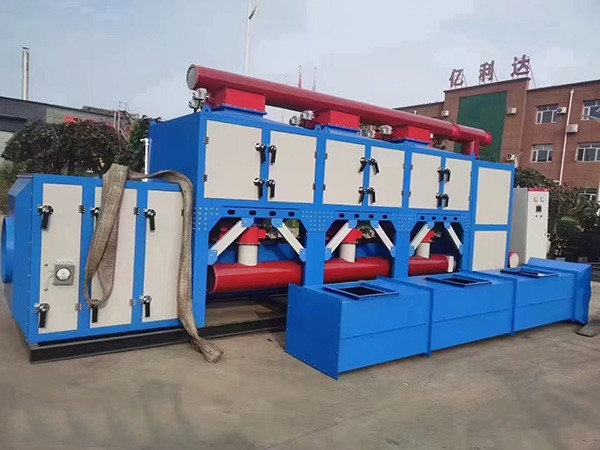-
All
-
bag Dust Collector
-
Electrostatic Precipitator
-
Cartridge Dust Collector
-
Desulfurization And Denitrification Equipment
-
Dust Collector Bag
-
Dust Collector Skeleton
-
Electromagnetic Pulse Valve
-
Rotary Valve
-
Screw Conveyor
-
Dust Conditioner
-
Plug Valve/Butterfly Valve
-
Scraper Conveyor
-
Catalytic Oxidizer
-
Cyclone Dust Collector
-
Sintered Plate Dust Collector
-
Spray Tower
-
Activated Carbon Adsorber
-
Light Oxygen Purifier
-
Dry Filter Box
-
Bucket Elevator

Catalytic Combustion Integrated Unit
The desorption time of the catalytic combustion integrated unit is primarily determined by the filling amount of activated carbon and its adsorption capacity. ...
The desorption time of the catalytic combustion integrated unit is primarily determined by the filling amount of activated carbon and its adsorption capacity. A higher filling amount and greater adsorption capacity result in longer desorption intervals, typically ranging from 15 to 20 days. Conversely, if the activated carbon used in the catalytic combustion equipment has low adsorption capacity and a small filling amount, the equipment is prone to saturation quickly. For such catalytic combustion units, the desorption time is usually set at 3-5 days, leading to significant energy waste and increased operational costs. Additionally, the service life of activated carbon is shortened—high-quality activated carbon typically requires replacement every 2-3 years. For units requiring frequent desorption, the activated carbon may need replacement annually. The desorption time of catalytic combustion equipment is adjusted based on the concentration of exhaust gases and daily operating hours, generally scheduled every 15-20 days, with a desorption duration of 3-5 hours.
Performance Features of the Catalytic Combustion Integrated Unit:
1. Low ignition temperature and energy savings. The equipment only takes 15 to 30 minutes to heat up to the ignition temperature upon startup, with energy consumption limited to the fan power. It automatically compensates when the concentration is low.
2. Easy to operate, the equipment achieves automatic control during operation, ensuring stability.
3. Wide Applicability: Catalytic combustion can treat almost all hydrocarbon waste gases and malodorous gases. For low-concentration, multi-component, non-recyclable waste gases emitted by industries such as chemicals, coatings, and insulation materials, the adsorption-catalytic combustion method offers excellent treatment effectiveness.
4. Utilizing a honeycomb ceramic carrier catalyst impregnated with precious metals palladium and platinum, it features a large specific surface area and low resistance.
5. The waste heat can be recycled back to the drying tunnel, reducing the power consumption in the original drying tunnel, or utilized as a heat source for other purposes.
6. Treatment, No Secondary Pollution: The purification rate of waste gas treated by catalytic combustion is generally high, with the final products being CO2 and H2O. Due to the low combustion temperature, it can significantly reduce the generation of NOX, thus avoiding secondary pollution. However, its drawback is the stringent process requirements, which prohibit the presence of dust particles and mist droplets that could affect catalyst lifespan and treatment efficiency, as well as substances that might poison the catalyst. To prevent catalyst poisoning, pretreatment of the waste gas is necessary when employing catalytic combustion technology for waste gas treatment.
7. High stability and excellent purification effect.
8. Compact footprint: Occupies only 70%~80% of the space required by similar products in the same industry, with no additional requirements for equipment foundations.
9. Long service life: Catalysts are typically replaced every two years, and the carrier can be regenerated.







